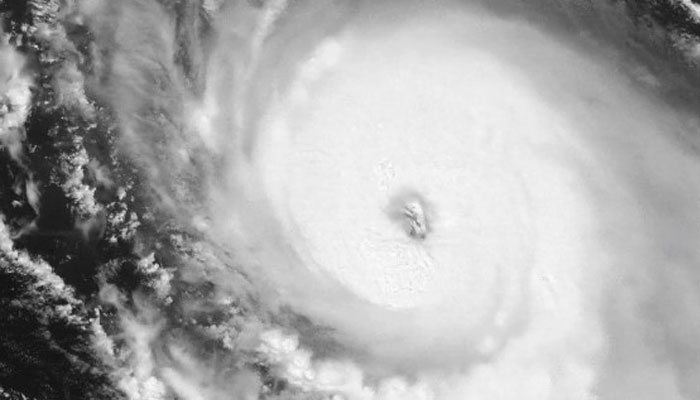Hurricane Lee predicted to become category five storm; no landfall expected
Hurricane Lee follows the destructive Hurricane Idalia that struck Florida last week
September 08, 2023

Forecasters predicted that by Friday, Hurricane Lee, which has gained the strength of a category four storm with winds of up to 130mph (215 km/h), might become the first category five hurricane of the Atlantic season.
The 12th named storm of the Atlantic hurricane season — lasting from June to November — Lee rapidly strengthened from a category one storm within hours. Based on its present path, Lee is not anticipated to make landfall.
"Additional strengthening is expected tonight," said the US National Hurricane Center (NHC) at 17:00 EDT (21:00 GMT) on Thursday.
With Lee presently 780 miles east of the northern Leeward Islands, the point where the Caribbean joins the Atlantic Ocean, the NHC forecasts severe surf and rip currents to reach the northern Caribbean by Friday, Puerto Rico, and the US east coast by Sunday.
US President Joe Biden was briefed with updates on the hurricane, which follows Hurricane Idalia, the most violent storm ever to strike Florida.
Additionally, Tropical Depression 14 has turned to Tropical Storm Margot, which will continue to linger over open water but intensify throughout the weekend. While this is happening, Hurricane Jova, a category five to four storm, has moved significantly farther out into the Pacific Ocean.
The storm, originating from southwestern Mexico, is not expected to make landfall either during the 2023 Atlantic hurricane season, which is expected to be more active than average.
Extreme weather has become a frequently occurring event globally over the past few years, especially after a drastic and constant rise in human-induced climate change.
Extreme record-breaking heatwaves across Europe, Asia and the US made 2023 the hottest year since it was first recorded and has resulted in record deaths throughout the year.
Additionally, torrential rains have resulted in flash floods across the world and have also caused much damage and casualties.
Although it is still uncertain how climate change may affect the frequency of tropical storms, rising sea surface temperatures will warm the atmosphere above and provide hurricanes with more fuel.
They consequently have a higher likelihood of intensifying with more severe rainfall.









